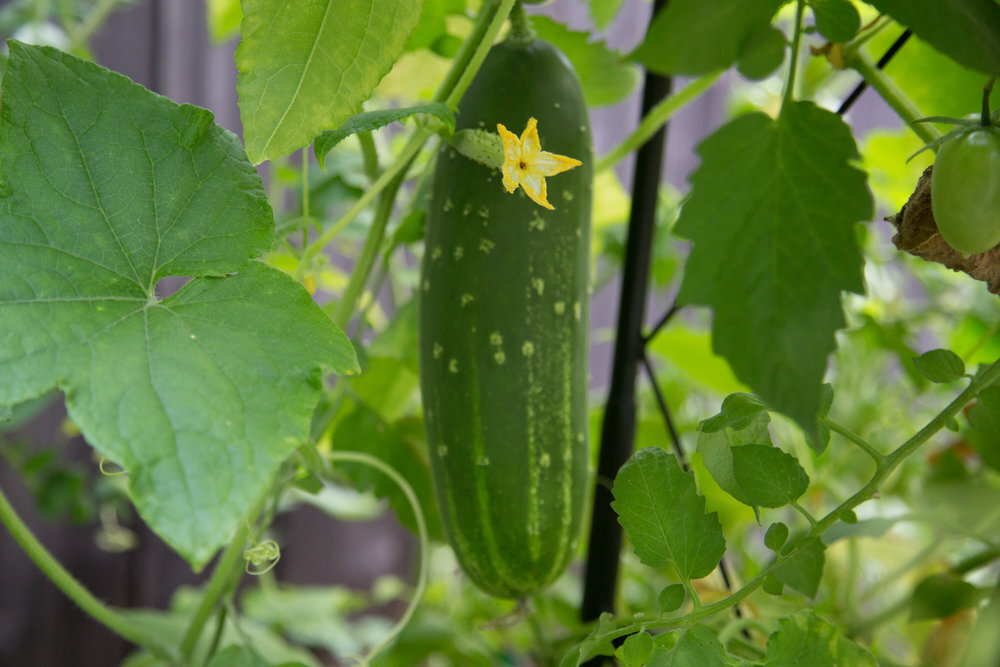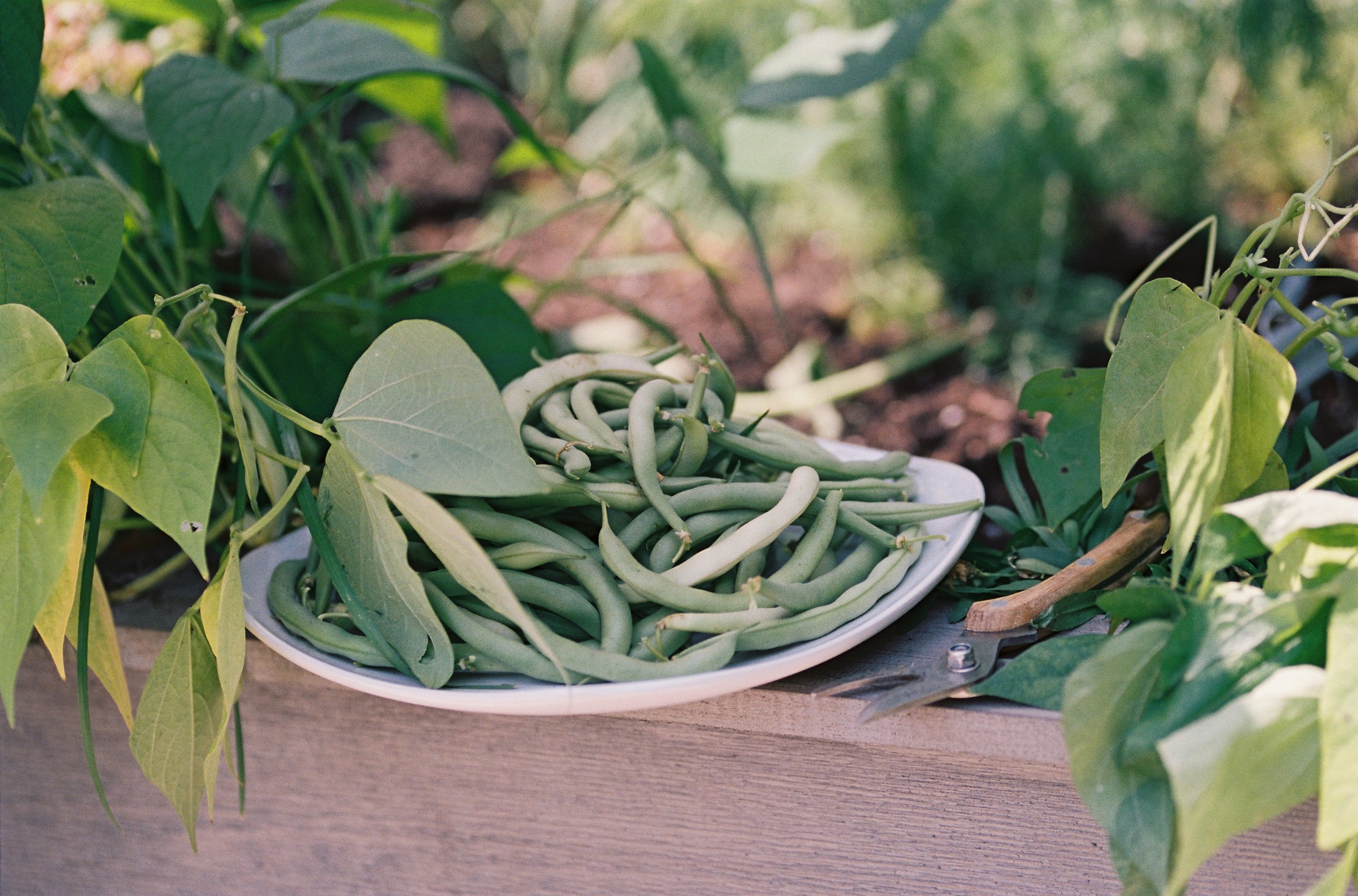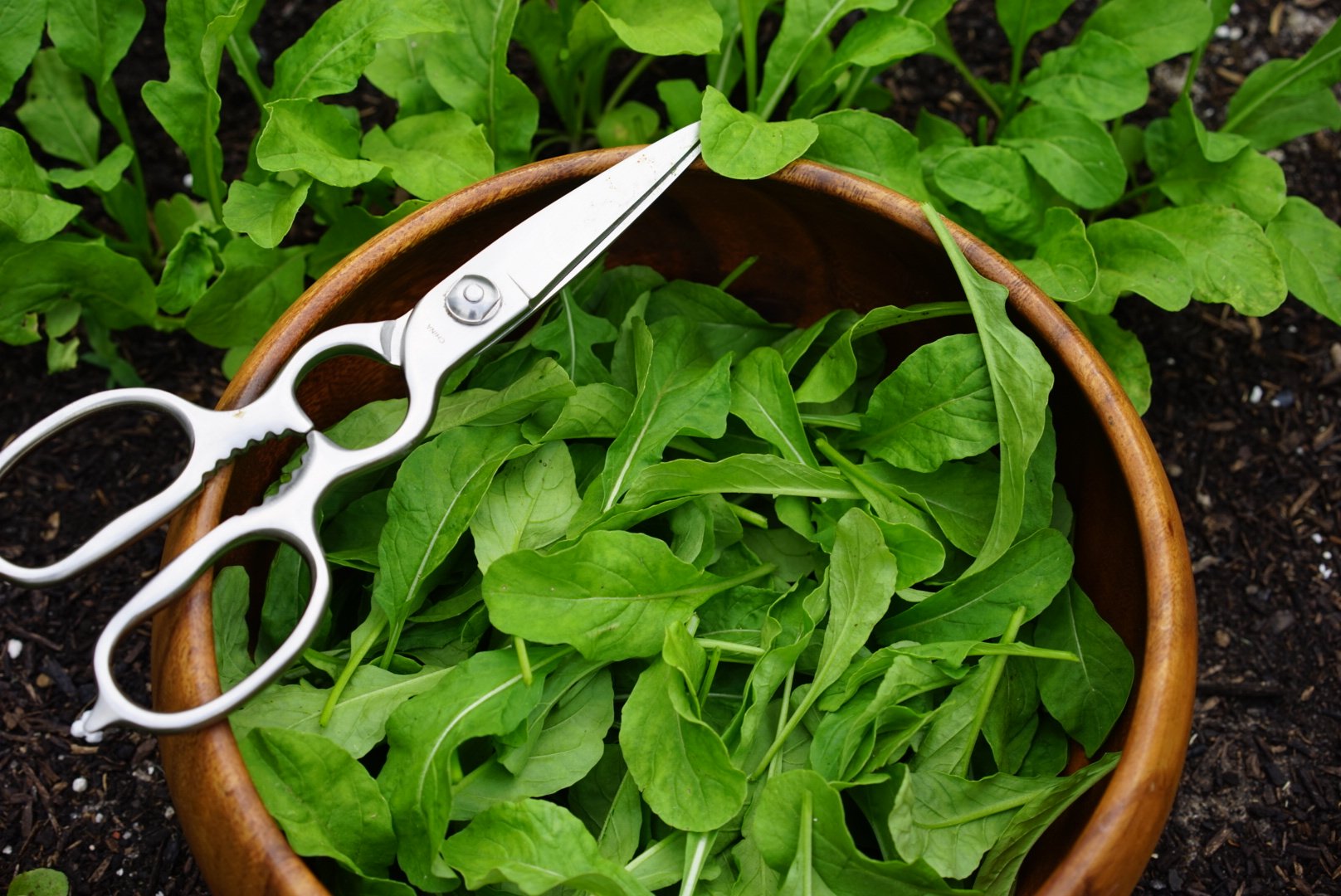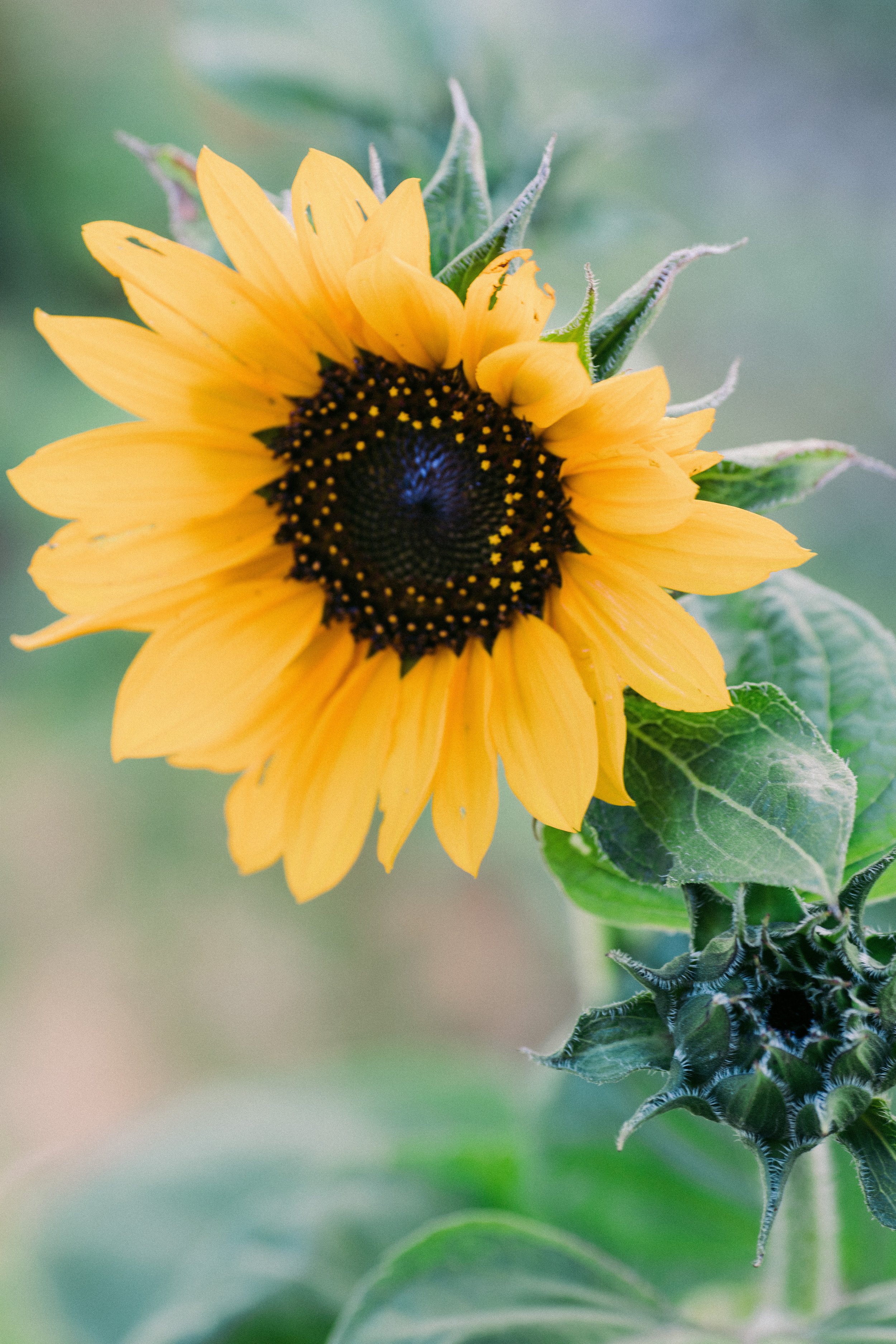What to Plant in Your Houston Garden in March
Welcome to March in the Houston vegetable garden. Here’s a sneak peek of all that you can grow in the garden this month.
March is the Beginning of the Warm Season in the Houston Garden
During this season, you can grow tomatoes, peppers, cucumbers, squash, zucchini, and both pole and bush beans in your kitchen garden. Plant tomatoes as early as Valentine’s Day. These crops will finish up as summer heats up but can be planted again in early August for Warm Season II.
Houston has a short season of optimal spring temperatures ideal for planting vegetables such a beans and tomatoes before the heat and humidity of summer arrive. By planting these vegetables in March they have the opportunity to establish strong roots and to begin fruiting before it becomes too warm.
Vegetable plants such as tomatoes will stay alive, but won’t necessarily produce fruit once temperatures rise about 85 degrees. This is true for standard cucumber varieties, green beans, squash and zucchini.
The good news is that Houston has two warm season so two opportunities to grow these garden favorites. warm Season 1 March-May and warm Season 2 September-November. Plus, the Houston Hot season includes favorites such as eggplant, okra, loads of basil, Suyo cucumbers, Yard Long beans and Cowpeas so there is always an opportunity to be growing something amazing in the Houston Kitchen Garden!
March starts the quintessential spring garden in Houston. There is so much happening in the kitchen garden this month. You don’t want to miss out!
Key Tasks for March in the Houston Garden
1) Pull annual Cool Weather crops
2) Look for disease or pests and remove and treat them
3) Add 2-3 inches of compost before spring replanting
4) Decide on a planting plan for Warm Season
5) Add selected Warm Season crops
Plant Cucumbers, Squash and Zucchini in March in Houston
Tips on Planting Cucumbers in the Houston Garden
Cucumbers are in the Cucurbit family, or the gourd family, they are best planted from seed directly into the garden, you can start with transplants and starting your own seeds indoors.
Start with seed
I've found when I've done both in my clients’ gardens. I'll plant a seedling that's transplanted, as well as a direct seeded plant and overtime within two to three weeks, the direct seeded variety generally catches up and performs better over time. I think this is because it doesn't have to go through the stress and I think they're the seedlings are pretty fragile.
Cover with compost
Once planted, cover the seed with 100% compost.
Use a strong trellis
Plant cucumbers along a trellis for best results. Growing along a trellis helps ensure better health for cucumber plants, more sun exposure and less pests.
Keep well watered
The trick with cucumbers is keeping them well watered. While cucumbers are easy to grow, the plants will become stressed during the process if they dry out. So keep your watering schedule consistent for your cucumber plants.
Plant Tomatoes, Peppers, and Eggplants in the Houston Garden in March
For Best Results, Grow Tomatoes in a Raised Bed Supported by a Strong Trellis
I recommend growing your tomatoes in a raised bed in order to give your plants plenty of space to grow deep roots and firmly establish themselves and grow nice and long supported by a strong trellis.
Three Reasons to Grow Cherry Tomatoes in the Houston Garden
cherry tomatoes give you fruit over time
Cherry tomatoes are a vining plant that will give you little clusters of fruit over time. Two of my favorite cherry varieties to grow are Sun Gold and Juliets.
cherry tomatoes go with everything
Vine-ripened tomatoes are one of the best things to come from the garden, and they can be added to so many dishes. Again, maybe not a fruit salad, but there are so many different ways you can incorporate cherry tomatoes into your meals.
cherry tomatoes spend a long time in the garden
I usually get to enjoy the vines on my arch trellises for at least 90, if not 120, days, which is a long time in the garden world. That means many weeks of going outside with a bowl and picking fresh, juicy balls of flavor.
Cherry Tomato Growing Tips
These plants love to grow in warm to hot temperatures and receive loads of sunshine. They have deep roots, so they prefer a bigger garden. Word to the gardening wise: both types of tomatoes need support (stakes, cages, or trellises) and are hungry for loads of nutrients—they'll take whatever your soil gives them and still want more.
Learn how long it takes a tomato to ripen on the vine, and here's your step-by-step guide to growing tomatoes up an arch trellis. For a fun and comprehensive look at tomatoes, check out Episode 22: "The Truth About Tomatoes" on the Grow Your Self Podcast.
Peppers Are a Great Vegetable to Grow in Raised Beds in Houston
It seems like peppers are on everyone’s wish list for things they want to grow in their kitchen gardens—and for good reason. We love growing smaller pepper varieties (like shishito or jalapeño) in the kitchen garden for these reasons:
Peppers are a Low Maintenance Plant
You can get tons of small peppers off of just one plant, and because they're smaller, you don't have to wait as long to harvest them (compared to bell peppers, which require 60 to 90 days). Plus, they're much more forgiving about over- or under-watering than other fruiting plants.
Peppers Come in Hot and Sweet Varieties
Not everyone loves the burn of a jalapeño pepper. And that's fine. Shishito peppers offer a flavorful alternative with their nice, often sweeter flavor (only occasionally does one grow really hot).
Peppers are Full of Vitamins
Peppers are rich in vitamins A and C, potassium, folic acid, and fiber. Even so, they're one of the few vegetables I can reliably get all four of my kids to eat.
Pepper Growing Tips
Peppers grow best in the warm season, which means you can’t put them outside until the threat of frost has passed (and you want to harvest them all before the first frost of your next cold season arrives). For most of you, that makes peppers the perfect plant to grow in the summer.
Give these guys a little bit of room in the garden, stake them to hold them upright when the fruit gets heavy, and you'll soon be celebrating with a bowl of delicious peppers you've harvested fresh from your garden.
Read the step by step to grow your own shishito peppers.
Learn More about A Houston Garden Consult
Plant Bush Beans in the Houston Garden in March
Tips on Planting Bush Beans in the Houston Garden
The beginning of warm season means the end of your cool season lettuce plants’ time in the kitchen garden (at least until the next cool season).
Bush beans are an excellent, fast-growing crop to fill those empty spaces in your raised beds and be ready to harvest in the next 55 to 65 days.
While pole beans are also great, they take a bit longer to grow and require some type of support (thus their name). Bush beans are more compact and stay low, making them perfect companions for cucumbers that need to vine up your trellises or plants like peppers that will grow tall.
To plant your own bush beans, all you need are some dry beans, and a jar of water!
Beans have a protective seed coating that protects them from germinating too soon. We can jump-start their growth by soaking them in a jar of water.
If you have a dibber for this step, that’s great! If not, you can just use your fingers to push each bean into the soil. I plant bush beans four to six inches apart, or about one every hand length.
Plant Lots of Organic Herbs in the Houston Garden in March
It’s no secret that we love growing herbs in our clients’ gardens in Houston. And this is because we can grow year round.
This month is a great time to add new herbs to the Houston garden including:
Rosemary
Sage
Thyme
Oregano
Basil
You may also be able to plant more cilantro, parsley and dill-just be sure they’re planted in a spot that gets some shade and stays well watered.
We’re counting down the days till all our Houston herbs are grown locally in the garden-once you taste the homegrown variety, you’ll want to skip out on the grocery ones for good!
Plant Organic Greens Such as Kale, Arugula and Swiss Chard in the Houston Garden in March
Even though the weather is getting warmer, there are still loads of greens you can grow in your Houston garden in the month of March.
Arugula can be started by seed directly in the garden this month and will produce loads of delicious fresh salad harvests all spring long.
Swiss chard and kale are both biennial plants and if planted early in March, they can last through the spring and even into our hot summers, giving you fresh garden greens for your salads every day, even through the month of June, July and August.
Some of the Swiss chard and Kale we plant for our Rooted Garden clients last not just for months but for years in their Houston gardens.
For best results, I do recommend putting in plants instead of seeds at this point of the year and being certain you keep these plants well watered as they get established.The later you wait into the spring season to plant these greens, the more difficult it will be for these plants to get established.
Add 2 to 3 Inches of Compost to Your Raised Beds Before Planting for March in Houston
Don’t forget: you’ve got to feed your food!
Even though your garden may appear to be healthy, all the plants that have been growing in your garden over the winter have been absorbing the nutrients and minerals from your soil. So, in order to continue to have a healthy garden in the coming season, you need to replenish those vitamins and minerals.
You can do this simply by adding 2-3 inches of fresh compost to your garden before you plant for the spring.
With our Rooted Garden maintenance system, this is a key part of our routine. After we pull spent plants from the previous season, we clear the soil area of debris and add enough compost to the top of the garden to ensure that new plants have at least 2-3 inches of fresh compost to feed and support their growth as soon as they’re planted.
Set up matters most in the garden so don’t neglect this important step of planting for the coming season.
Add Flowers to Your Houston Garden in March
Flowers are an essential part of the vegetable garden during every season. Adding flowers to your vegetable garden ensures that there’s diversity in your garden, that there’s food for bees and butterflies and also decreases the likelihood of pest pressure on your crops.
You can plant both annual and perennial flowers around your gardens. I recommend planting annual flowers like zinnias, marigolds and cosmos inside the raised bed garden and planting perennial flowers like echinaceae, yarrow and rudbeckia outside your raised bed garden.
Most of the annual flowers should be planted by seed in the garden and will flower and grow for you for months-adding beauty, color and health to the garden, and ensuring the bees and butterflies know how to find your cucumbers!
Plant Zinnias by Seed in Your Houston Garden in March
Tips on Planting Zinnias in the Houston Garden
Zinnias are incredibly easy to start from seed and will grow under so many conditions, including pretty extreme neglect.
Zinnias are annuals, which means they complete their life cycle in your garden in a matter of months. If you plant zinnias by seed in the spring, they will flower all summer long and begin focusing on seed production as the weather threatens to get cold in the fall.
Zinnias have been bred to produce many different flower sizes and shapes, including singles, semi-doubles, and double blooms, and grow to different heights, some soaring as high as four to five feet tall. With colors ranging from tangerine to dusty apricot, lemon to lilac, and magenta to blush, you're sure to find a color and size of zinnia that works for your garden space.
One of my favorite varieties of zinnias is called the Northern Lights Blend from Botanical Interests. These grow 24 to 36 inches tall and produce long-lasting blooms in a visual feast of colors, including shades of pink, purple, and burgundy.
Another favorite is the California Giants, also from Botanical Interests. This heirloom variety grows up to four feet tall (thus the name) and produces blooms in bold rainbow colors.
A third favorite is just called Cut and Come Again Zinnia Seeds from Botanical Interests. This heirloom variety only grows about one and a half to two feet tall, but is excellent at attracting butterflies in search of summer nectar.
Plant Marigolds by Seed or Plant in Your Houston Garden in March
Marigolds are pretty magical and they really thrive in the Houston spring garden.
Marigolds are easy to grow from seed, they give a cottage-garden-feel to your outdoor space, they're beneficial for your other plants, they attract pollinators, they're beautiful, they smell heavenly, and they're even edible!
There are so many reasons to grow marigolds.
Grow Sunflowers from Seed in Your Houston Garden in March
Sunflowers are a fun compliment to the vegetable garden. Be sure to grow only dwarf varieties in your raised bed garden and grow larger and taller varieties outside of your raised bed. Sunflowers will attract pollinators and also serve as a trap crop for some pests.
Sunflowers grow best and quickly from seed. So, start early and plant seeds 1’ apart at a shallow depth for best results.
Get Help from Rooted Garden to Design & Install Your Raised Bed Vegetable Garden this Month
Success in the Houston garden is based on three factors: set up, timing and consistency.
Over the years, we’ve found that even if our clients have not had a lot of experience gardening or only experienced disappointment thus far, a great set up can help ensure their success. Once we set you up with a raised bed, great soil, strong trellises, locally grown plants and a consistent watering system, you’re at least 90% of the way to the harvest.
Once set up is complete, it’s the timing and consistency that matters.
Through this article and our support from the RG team, we’ll ensure that you get the timing right each month-only planting what grows best and helping guide you each month so you never wonder if it’s the right time (or not) for the plants you want to grow.
Finally, consistency matters too. All it takes is a few minutes a day or one hour a week to maintain a garden that’s set up right and planted at the right time. We can help ensure consistent care for your garden with our maintenance service and also with our regular check ins and garden coaching sessions.
The first step to enjoying the garden is setting it up the right way. And we’d love to help.
This month, we’re booking consults to ensure you have a spring garden in Houston. We’d love to meet you in your own space and create a garden you love as soon as possible.
Learn more about our garden consults and click below to schedule yours this month.
Here’s to enjoying every day in March in your own Houston garden.
Thanks for being part of the Kitchen Garden Revival.
Don’t Miss March in the Houston Vegetable Garden
March means an explosion of growth in the garden, and because it’s not too hot yet, we can dig in without breaking a sweat. The temperatures are quickly climbing, so it’s essential to get seeds and plants into the ground now so they can set roots and be strong before true warm weather sets in for good.
The Warm Season is when that quintessential vegetable garden begins
to take shape, so this month will be all about planting tomatoes, peppers, squash, cucumbers, beans, and arugula that will grow until the end of May or the first part of June.
As the temperatures rise, March may be the final chance to harvest your Cool Season salad greens, radishes and peas so be sure to cut and enjoy their last gifts to you, before making space for Warm Season plants.
Tending your Warm Season plants requires a bit more work to prune, trellis and fertilize your plants, especially as they begin to fruit. But, taking a few minutes each day or an hour on the weekend can be all you need to keep up with the growth.
With a little attention, good compost and steady rain and sunshine, your Warm Season garden will be off to a great start this month.



















